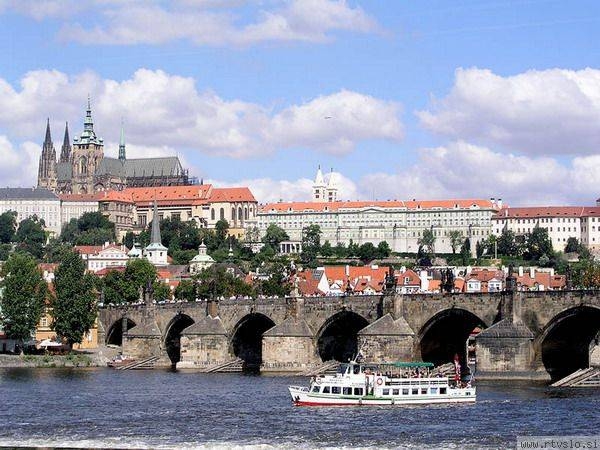When the president of the newly formed Czechoslovakia moved into the Prague Castle after World War I, he decided to restore the old building to its former glory. In a surprise move, he chose a Slovenian architect for the task.
Joze Plečnik, born in 1872 in Ljubljana, was already making a name for himself as one of Europe’s most inventive architects. Long before post-modernism, he had created a unique style that reinterpreted classical elements in a style that was fresh and surprisingly modern. However, Prsident Tomáš Masaryk’s decision to select a foreign architect rather than a Czech one for such a prestigious project was controversial, and was bitterly opposed by many citizens of Prague.
President Masaryk ignored the skeptics, and was proved right when Plečnik’s renovation of the castle turned out to be a success. Among other elements, Plečnik designed a hallway, a staircase, a doorway, wooden flagpoles, the castle’s gardens, and the most impressive sight of all – an imposing central obelisk. (The first one broke on its way to Prague, much to the delight of Plečnik’s critics.) As always, Plečnik paid considerable attention to every detail while working on the project.
After upgrading the castle, Plečnik went on to design the exceptionally modern and inventive Church of the Most Sacred Heart of Our Lord, which is now one of the most famous churches in Prague.
Plečnik’s work in Prague won him widespread acclaim, but he remained loyal to his native Slovenia, and turned down Masaryk’s invitation to teach at the Prague Academy of Fine Arts. Instead, he continued to teach at the newly-founded School of Architecture in Ljubljana, while still working on various projects in the Czechoslovak capital.
When Masaryk retired in 1935, Plečnik’s work in Prague also came to an end. In the years that followed, the architect focused his attention on the National and University Library in Ljubljana, an exceptional building that is still considered one of the most beautiful libraries in the world.
Ultimately, the people of Prague came to embrace Plečnik’s work. Visitors are now taken on tours of his designs, and Slovenia and the Czech Republic have joined forces in a bid to get his work added to the UNESCO World Heritage List. For years, the train that connected Prague and Ljubljana was named in Plečnik’s honor, in recognition of a quiet man whose creativity left and indelible mark on both cities.


































































